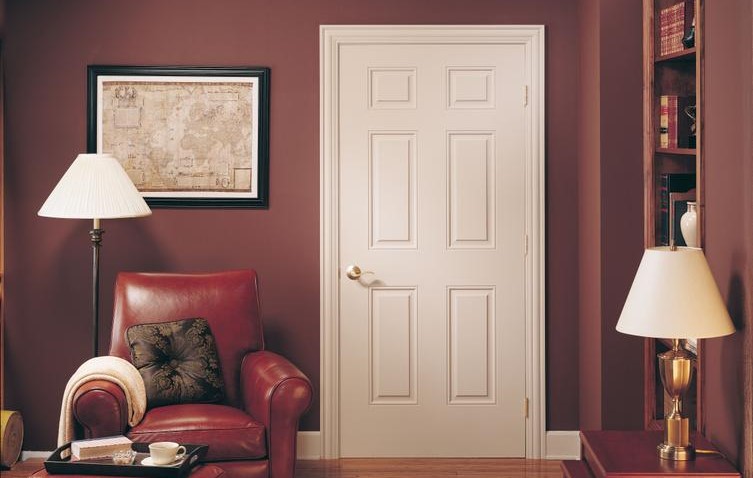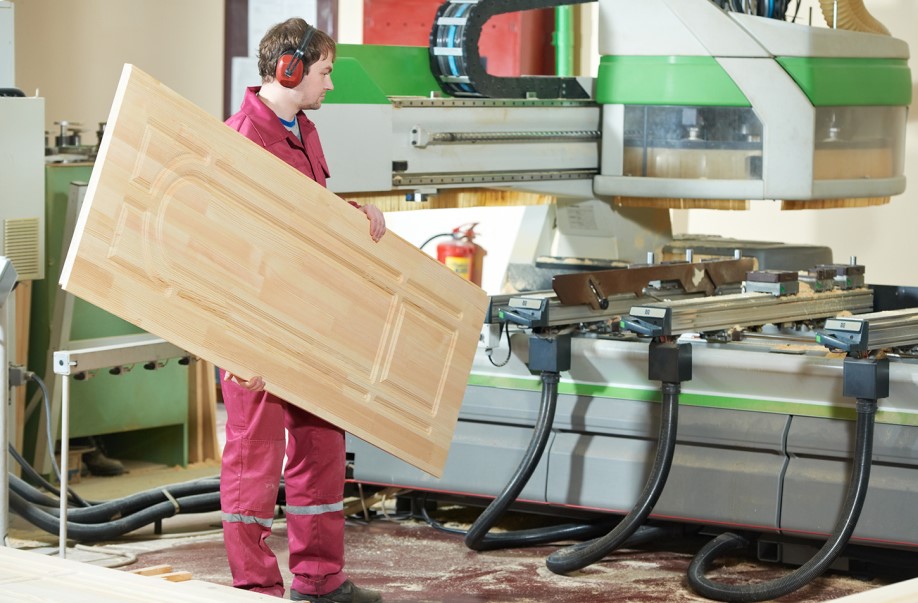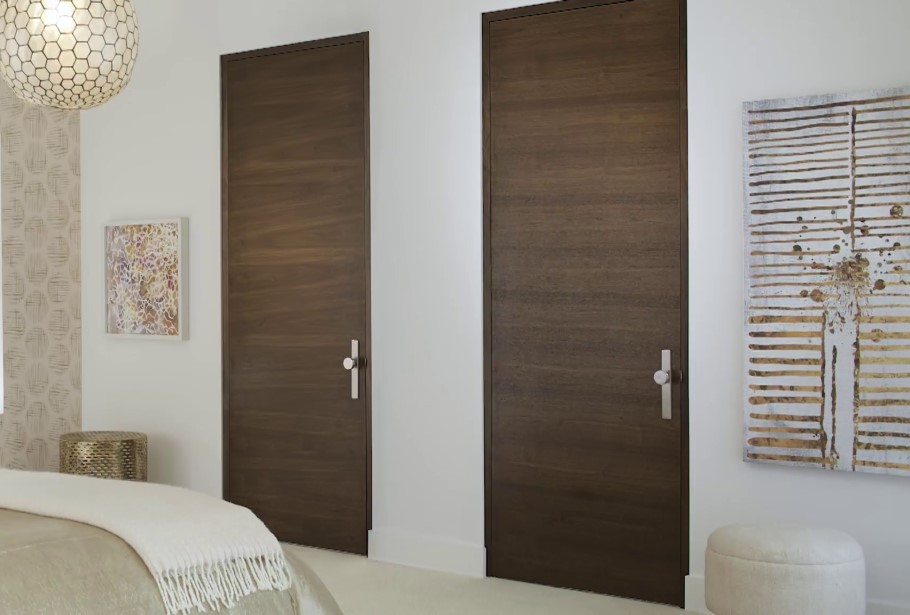Before founding a company for manufacturing wooden doors of different types such as molded and flush and several others, house builders had to go through a complicated and noisy process to make a door.
many years ago, carving a door out of a piece of lumber or timber was an extremely difficult job; instead, they cut long boards and attached them to each other using two or three metal tapes to make a wooden door like the ones you may have seen in villages.
Then, with the invention of the electric chainsaw, the human was able to shape the door as he desired and even add some designs and drawings to it for sake of beauty and art.
However, after CNC technology showed up, a wooden door maker had to do nothing but provide a board of different layers of wood embedded in each other, giving a program to the machine and waiting for its arms to do their job.
The procedure is still complicated but the technology is complicated enough, too.

Nowadays, there are various models of doors including molded _which are pieces of wood by-products pressed, integrated, and shaped like a door_ and flush doors _which are single pieces with layers of MDF, laminate, etc.
Covering them_ being produced in companies equipped with decent machinery worldwide.
A wooden door being carved under carpenter’s tools had to be strong enough not to be broken but not that tough to resist the fire fighters’ ax when the house was on fire, either.
Wooden Door Manufacturing Process
There are many wooden door producers across the world responding to their customers’ demands.
A factory manufacturing wooden doors is usually consisted of several parts and a big hall where the main production process machines are located.
The raw material _wood waste for molded and wooden boards for flush doors_ is brought to the company.
The boards being used for the production of doors can be of oak, cherry, African mahogany, etc.
The producers first slide the raw lumber through a couple of electric round blades to see the top and the bottom of it simultaneously.
Then, a machine with several round saw blades cut the lumber along its length into several thinner pieces.
Then a worker puts the cut pieces together again and glues only one side of them with a painting roller.
Then, these pieces would be taken to a clamping mechanism to be attached to each other.

After a robot checks the proportions of the lumbers and the quality of the attachment, the glued lumbers would now get sandwiched between two thin glued MDF layers under a heavy pressing machine.
Next, the workers and computer-guided machines cut the initial drawings and designs on the lumbers; they put holes in designated points for hinges and other hardware and carve rails on the edges.
The other pieces of lumber forming the framework of the door would be glued on these rails.
Eventually, the doors would be colored at least three times, glazed, and ready to be installed.
What Are Molded Doors
Not all of the wooden doors for houses and offices are made of cut raw wood.
There is also a newer type called the ‘molded’ door.
What makes these doors specific and distinguishable is that they consist of wood wastes of branches and twigs, cotton and grain ranches, hemp, and other wooden plants’ strings.
Molded doors are one of the most important variants of the doors industry.
The doors being discussed are divided into three kinds in terms of thickness: single-layer, three-layer, and multi-layer doors; however, some of them are formed after wooden wastes pass through a set of rollers and get together casually while some others are manufactured after the pressing machine squeezes the wooden wastes into a template.

There are four types of molded doors in terms of coating.
- Coatless molded doors which are mostly used for least exposed areas like dropped ceilings and inner floors of closets and wardrobes.
- Molded doors with natural wood which are covered with natural layers of walnut, beech and etc. for more beauty. These models are mostly used for inner house decoration, desk panels, and cabinets.
- Molded doors with an artificial coating that are covered with a special type of paper soaked in glue. The drawings on the paper used for this type of door can be determined by the customer and artificially-coated molded doors are commonly utilized for areas with the highest temperature and moisture like bathroom walls, restaurant tables, etc.
- Varnished molded doors are another type of door covered with a protective layer of color and anti-moisture ingredients on one or both sides. These doors are used for bathroom and kitchen walls.
Molded Doors vs Flush Doors
Finally, it comes to flush doors; a different species of doors with a single piece of natural wood within, which distinguishes them from molded ones.
The common coatings producers use for flush doors are veneer, medium density fiberboard or MDF, and laminate.
This simple construction they have, however, doesn’t mean they cannot be beautiful enough for home decoration and being utilized for exposed areas.
The mentioned doors can be categorized as solid core, hollow core, and stave core doors.
The stave core ones consist of wooden slats placed and fixed on each other, while the ones with a hollow core are made of a frame with wooden layers attached to both sides.
However, both mentioned types are secondary alternatives for the main category of flush doors; solid core flush doors are heavier ones with a decent wooden board within and layers upon both sides.
All the flush doors have proven to be simpler, less expensive, and more attractive rather than molded ones which are higher in terms of technology of production.
Molded doors are more nature-friendly because they are manufactured of wood waste but flush doors need more woodcutting.

The other matter is that flush wooden doors don’t meet today’s modern specifications and are ordered by clients who intend to customize their home décor along with their unique taste rather than present time modernization; while molded doors offer some modern houses a super luxury façade.
The team we have formed is a leading supplier and professional negotiator for the exportation of both door types discussed above in Middle-east and entire Asia.

0
0